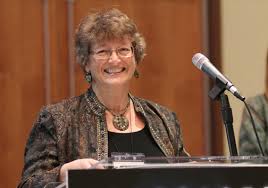Cardboard characters

Jew in the Christian world by Candace R. Kwiatek, The Dayton Jewish Observer
A literary character that’s two-dimensional, “lacking in depth, complexity, or history” is known as a flat or cardboard character, writer Brandon Sanderson explains. Such characters do not change over the course of the story.
In the real world, Jews and Christians have tended to view each other as cardboard characters.
Jews have been portrayed as legalistic, rigid adherents of biblical law. Christians have been depicted as militantly righteous, messianic proselytizers of a “God is love” message.
These extreme stereotypes do great harm not only by demeaning and marginalizing, but even more so by communicating the idea that there is no common ground between Judaism and Christianity.
To find common ground, we need to stop seeing each other as cardboard characters. In the fall of 2000, more than 100 rabbis and scholars did just that, publishing a statement titled Dabru Emet (Speak Truth) as a full-page ad in major print and electronic media outlets.
Included in the eight-part statement about the growing understanding between the two religious traditions was the observation that “Jews and Christians accept the moral principals of Torah.”
Theologian Thomas Aquinas (13th century) said much the same, explaining that the ceremonial and judicial laws of the Jewish Bible were no longer binding on Christians, but the moral precepts are permanent.
While they are different faith communities, when it comes to living day by day, Judaism and Christianity do have common ground in the moral and ethical spheres.
In God’s Image. Both traditions assert the value and dignity of each human being, of respecting oneself and others, because all humans were made in God’s image (Gen. 1:27).
Sanctity of Life. Unlike other ancient — and now some modern — philosophies, Judaism and Christianity have dedicated themselves to the respect, protection, and preservation of life. It is interesting to note that, despite the stereotypical images, Christians pursuing careers in the military and Jews pursuing careers in medicine arise from this shared ethic.
Love your neighbor as yourself. This principle of common decency from both traditions’ Scriptures (Lev 19:18 and Matt. 22:39) underscores a commitment to compassion.
Golden Rule. “Do unto others as you would have them do unto you,” was a central teaching of Jesus, made famous by his Sermon on the Mount. His teaching had Jewish roots. Rabbi Hillel (1st century B.C.E.) responded to a prospective Jewish convert as he stood on one leg: “That which is hateful unto you, do not do to your neighbor. This is the whole of the Torah. The rest is commentary. Go forth and study.”
Ten Commandments. Judaism teaches that all humans are obligated to the universal morality codified in the Noahide Laws as the foundations for civilization: Do not deny God, blaspheme, murder, undermine marriage, steal, or eat of a live animal, and establish courts and a legal system.
However, the Ten Commandments, obligatory for Jews, were also adopted by Christianity as its preeminent moral tenets: no other gods, no idols, no blasphemy, remember the Sabbath, honor parents, no murder, no adultery, no stealing, no bearing false witness, no coveting.
Family. The biblical view of marriage and family, the backbone of society, is largely shared between Judaism and Christianity. Marriage creates stable reciprocal relationships between individuals, helpmates for one another. It provides a nurturing environment for children and is the source of a healthy, productive, and responsible citizenry.
Liberty. Resonating with both Jews and Christians, the Exodus story links freedom to responsibility: to make good choices, to fight injustice, and to recognize that human beings have the capacity to transform their circumstances.
Jews and Christians alike have transformed the world for good because they have understood that there is no freedom without responsibility.
Justice. In both Jewish and Christian scriptures there is a call for justice. Moses exhorts, “Justice, justice shall you pursue (Deut. 16:20),” and the Hebrew term for charity is tzedakah, justice rather than generosity.
“Biblical justice involves making individuals, communities, and the cosmos whole, by upholding both goodness and impartiality…(toward) the poor, orphans, and widows,” writes Paul Metzger in What is Biblical Justice?
Participating in mission trips, both local and overseas, building homes, offering medical care, providing clean water, influencing legislation to this end all exemplify this moral tenet.
The stereotypes of Judaism as law and Christianity as love do a great disservice to two great religious traditions.
Instead of seeing each other as cardboard characters, we need to see each other as full, multidimensional characters that have different faith traditions but a common moral ground.
Focusing on our shared ethics when addressing controversial issues or looking for societal solutions would help to bring about more interfaith understanding, if not agreement.
Whether in response to God’s law or in the image of Jesus, we need to become better partners in fixing this world.
Literature to share
Sadie and the Big Mountain by Jamie Korngold. “Adventure Rabbi” Jamie weaves together Bible, midrash, and nature with a lesson in courage in this whimsically-illustrated preschooler’s explanation of Shavuot. Cooking and other projects are included for your own reenactment of the story. Pair this book with Seder in the Desert and Sadie’s Lag Ba’Omer Mystery by the same author for the perfect trio of tales for the Passover-to-Shavuot season.
Mosaic Haggadah by David Silberman. Whether you’re looking to add more participation to the annual straightforward reading of the Haggadah, searching for new or different big ideas that are hinted at in the collection of traditional texts and songs, or wondering how to fulfill the obligation to “see oneself as personally redeemed from Egypt,” this is the Haggadah for you. Six color-coded themes offer writings, quotes, and questions to stimulate participation and engagement throughout the festival. Get a copy now so you’re prepared for next year.
To read the complete May 2016 Dayton Jewish Observer, click here.



